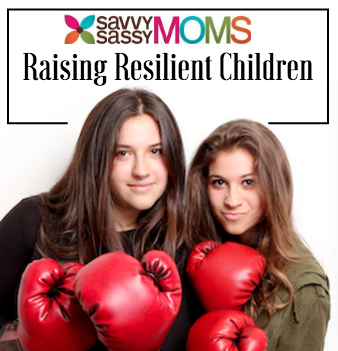Life can be tough sometimes, and it can be a little frustrating, too. Teaching young children to navigate stressful times and to bounce back through challenging situations helps children thrive. So the question is, how do we raise resilient children?

Understanding the importance of resiliency
Building resiliency skills in children encompasses a variety of situations. We’re talking about building lasting relationships, dealing with sudden changes and other challenges your child encounters throughout their life.
As parents, we hope we are raising happy, confident and competent children. Despite our best intended efforts, many children often struggle with resiliency, self-regulation and problem solving skills, particularly when their emotions are heightened. Problems in these areas can lead to poor self-control in a young child, which can have a serious effect in all areas of their life.
By building resiliency in the early years, children have the opportunity to develop the aforementioned skills early on. They gain self-control, confidence and a positive outlook, while participating in daily activities and gaining ownership towards their behavior and actions.
A parent’s role in developing resiliency
Parents should strive to be present and be positive role-models. With continuous role-modeling, parents pave the way for their children to learn how to navigate the world around them and have a sense of self. For example, if you show patience when you are waiting for your drink at the coffee shop, your child will learn to develop patience further down the road. If you persevere in tasks, with some encouragement, your child will try to complete difficult tasks and eventually achieve their goals.
Building Self Regulation Skills is also imperative in the process of building resiliency skills. Self-control skills give us the ability to self-regulate. Turning a negative situation into a positive one ensures children understands not all things are permanent.
12 ways to help build resiliency and self-regulation
- Give your children cues and ways to rethink certain situations
- Stop and catch negative thoughts and behaviors
- Empower children to make decisions
- Help children focus on individual strengths
- Teach strategies to calm down
- Maintain flexibility in new situations
- Delay gratification
- Be careful that your desire to protect your child doesn’t mistakenly send a message that you don’t think he or she is competent to handle things
- Praise honestly about specific achievements; not diffusing praise that may lack authenticity
- Don’t push the child to take on more than he or she can realistically handle
- Allow the expression of all emotions, so kids will feel comfortable reaching out during difficult times
- Address conflict openly in the family to resolve problems
Planning and reshaping conversations builds resiliency
Help your child plan for positive outcomes by analyzing problems that could arise outside of the home. Sharing your experiences with your children will help them identify positive and negative outcomes. If we guide children and role model actions, we can help them understand feelings of others and actively engage in positive activities.
Today, our children have unlimited access to messages that communicate both positive and negative messages. Those messages can manifest into negative thoughts and behaviors. Parents need to try to discourage generalized statements such as “always” and “everything.” Suggesting more positive phrases may take us some time, but you can make this happen.
Resiliency is a long-term process
Our successes in aiding our children with these ongoing resiliency skills will depend on how parents are able to interrupt negative habits and turn old habits into positive ones. With what we know and can do as parents, plus acknowledging children’s feelings, genuine interests and gently challenging thinking, we can assist in developing children’s self-worth, growth and achievement. Promoting resiliency and self-regulation in children is a not a one-time event, but rather a continuous process. Building resiliency requires you to be supportive and empathetic when things don’t go their way. It also requires you to understand your own resilience, so you have faith in yourself to teach your children.
This post was written in collaboration by Lisa Kobrin and Janet Arnold.
References:
http://www.beststart.org/resources/hlthy_chld_dev/pdf/BSRC_Resilience_English_fnl.pdf






